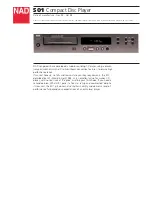
23
Fig. 2
1 Planing and thicknessing machine
2 Ripping fence
3 Handle
4 Suction connector
Assembly
Assembling trimming endstop unit Fig. 3
Attention! Device must be unplugged from mains dur
-
ing any retooling or assembly work
Install the jointing bracket (A) with 2 inner hexagon
bolts (B) M5x20mm to the side wall of the jointing
table.
Justifying the trimming endstop Fig. 4
Postion the endstop at a 90 ° angle, and clamp it in
place with the toggle screw
(H).
Now place the cross-
slotted screw
(F)
against the endstop and secure it
with the nut. Then position the endstop at 45° and
clamp it in place with the clamping screw
(H).
Next,
place the allen screw
(G)
against the endstop and
secure it with the nut.
Now check both brackets with a sample and re-justify
the scale if required.
Adjusting the stop rail Fig.4
The stop rail (C) in the area of the stop bolt (E) can
be displaced by loosening the clamping lever (D).
Planer shaft guard Fig. 5
The clamping handle (J) serves the purpose of lifting
and fixing the planer shaft guard (K)
Putting into operation
Attention! Device must be unplugged from mains
during any retooling or assembly work
Dust extraction Fig. 6,7
When used in enclosed rooms, the machine must be
connected to a dust extractor unit.
Connecting the dust extractor for surface planing:
• Set the thicknessing table to the lowest position
and push the suction connector into the machine
until both switching pins
(I)
can slide into the mor-
tises
(H) (Fig. 6)
.
• Finally, fasten the exhaust hood on the jointing
table with a threaded pin Fig. 7.
Connecting the dust extractor for thicknessing
(Fig. 8.0, 8.1, 8.2)
•
Loosen the clamping lever (D, Fig.4) and push
back the stop rail (C) up to the stop bolt (E)
•
Adjust the stop at an inclination of 45°
•
Push the knife cover back
•
Lift the arm (G) of the planer shaft guard so that
the slotted holes (H) are exposed
Fig. 2
1. Raboteuse-dégauchisseuse
2. Butée de rabotage
3. Poignée
4.
Manchon de prise d’air
Montage
Montage butée de dressage Fig. 3
Attention ! Avant tout travaux de rééquipement et de
montage, débrancher la fiche d’alimentation
Installez le support de dégau (A) avec 2 vis à tête
hexagonale (B) M5 x 20 mm à la paroi latérale de la
table de dégau.
Alignement de la butée de dressage Fig. 4
Régler la butée à un angle de 90 ° et la serrer avec la
vis à clé
(H).
Régler la vis à fente
(F)
jusqu’à la butée
et la bloquer avec l’écrou. Puis régler la butée sur
45° et bloquer avec la vis à clé
(H).
Ensuite régler la
vis Allen
(G)
jusqu’à la butée et bloquer avec l’écrou.
Vérifier les angles à l’aide d’un échantillon et régler
de nouveau l’échelle
(I)
si cela est nécessaire.
Réglage de la barre de butée Fig. 4
En desserrant le levier de serrage (D), la barre de
butée (C) peut être réglée dans les vis de butée (E).
Protection de l'arbre de dégau Fig. 5
La poignée de blocage (J) sert à verrouiller la
protection de l'arbre de dégau (K).
Mise en service
Attention ! Avant tout travaux de rééquipement et
de montage, débrancher la fiche d’alimentation
Aspiration de poussière Fig. 6,7
Si la machine est utilisée dans des locaux fermés,
elle doit être reliée à un dispositif d’aspiration.
Raccord de l’aspiration pour le dégauchissage:
•
Mettre la table à la position la plus basse et pousser
la buse d’aspiration dans la machine jusqu’au point
où les deux boulons commutateurs
(I)
se laissent
pousser dans les trous oblongs (H)
(Fig. 6)
.
•
Enfin, fixez la hotte aspirante avec un boulon fileté
sur la table de dégau Fig. 7.
Raccord de l’aspiration pour le rabotage
(Fig.
8.0, 8.1, 8.2)
•
Desserrez le levier de serrage (D, Fig.4) et
poussez la barre de butée (C) jusqu’à la vis de
butée (E).
•
Réglez la butée à un angle de 45°.
•
Faites glisser le protège-lame.
Summary of Contents for 5902206901
Page 2: ......
Page 35: ...35 IT FIN HU...
Page 67: ...67 CZ SK SLO...
Page 95: ...95 NO SE EST...
Page 123: ...123 LIT LAT DK...
Page 151: ......
Page 152: ......
Page 153: ......
















































